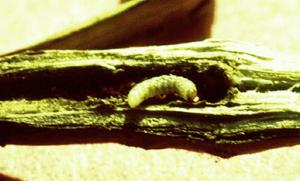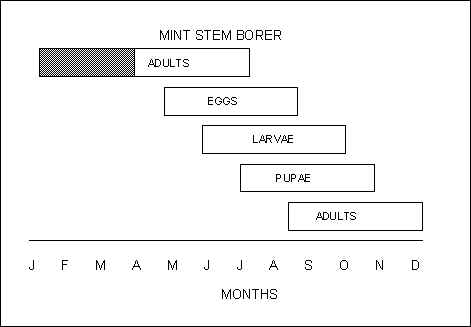|
MINT STEM BORER LIFE CYCLE AND BIOLOGY |
|
CONTENTS |
Mint stem borer, Pseudobaris nigrina, is a black weevil, about 1/8 inch long, that overwinters in mint fields and becomes active in mid-May to early June. The female, which may deposit as many as 100 eggs during the growing season, chews a hole in a mint stem near the soil line and deposits a single egg in the wound. Larvae hatch in late June and begin feeding on the tissues in the center of the stems and usually burrow into the rhizomes. Larvae feed for about 3 to 4 weeks until late July, although in Idaho some larvae have been found in the stems as late as October. Pupae are found in late July and produce adults that emerge about 2 weeks later. There is one generation each year and apparently a partial second generation in late fields. Overwintering adults are usually found inside hollow stems or in soil debris. The mint stem borer has only been found infesting mint in Idaho and eastern Oregon, where it feeds on peppermint, and native and scotch spearmint. It also feeds on wild mints, goldenrod and Kochia.
For a more detailed description of this pest, see Baird et al. (1990) The Mint Stem Borer in Idaho, University of Idaho Extension, Current Information Series No. 808. |


